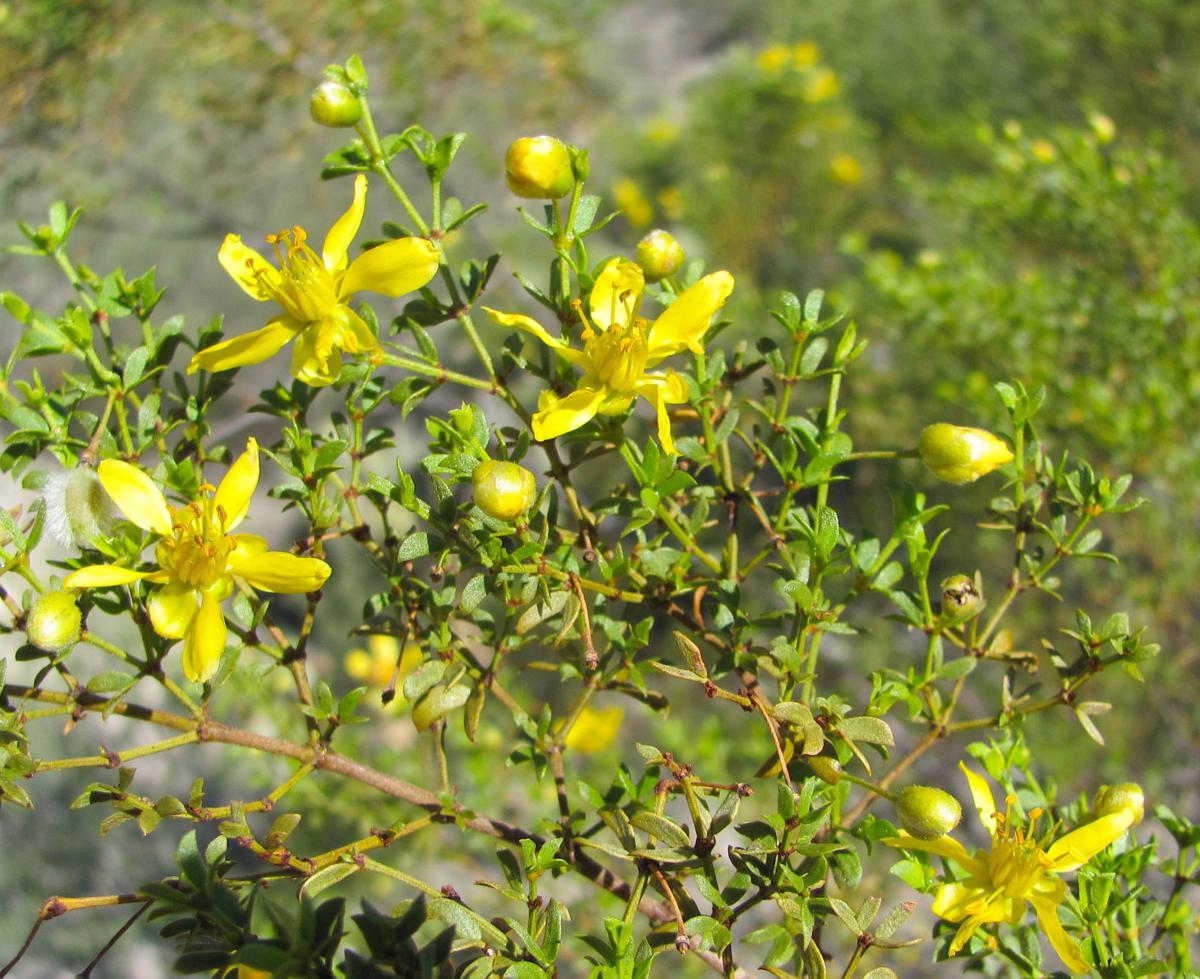There’s nothing that evokes the Sonoran desert more than the smell of creosote bush (Larrea tridentata) after the rain. These remarkable plants are native to all of the North American deserts, including the Sonoran desert. Their refreshing spicy smell is due to volatile organic compounds that the plant emits, including camphor, methanol, and limonene, among many others.
Creosote grows to be 3-6 feet wide and up to 8 feet tall in ideal conditions. It is thornless and low litter, and has lovely yellow blooms anytime from early spring through late fall, depending upon how much water it gets. These shrubs provide habitat and food for many desert reptiles (including the desert tortoise), amphibians, and small mammals, as well as providing early nectar to at least 22 species of native bees.
It is thought that the shrubs are allelopathic, which means they exude toxins through their roots to discourage other plants from growing under them. However, the lack of plants at their bases may also be explained by the creosote’s excellent adaptation to desert conditions, which other plants cannot compete with. In the wild they are found with a number of native species, including brittlebush, palo verde, mesquite, desert willow, and others.
Creosote reproduces through seeds, but it can also form clones around the periphery of the original plant. The oldest known creosote bush is King Clone in the Mojave desert and is thought to be nearly 12,000 years old.
Not surprisingly, given its unique biochemical compounds, the creosote bush was considered a medicinal plant by various Native American tribes in the desert southwest. It was used for treatment of infections, snakebite, and as a topical wound treatment, among other uses. More recently, some of its compounds have been investigated as cancer treatments.
Creosote is extremely heat and drought tolerant. It only opens its leaf pores and photosynthesizes in the mornings; its leaves face southeast to make the most of early morning sun. This adaptation allows it to avoid losing precious water through the leaf pores during the heat of the day.
Creosote bush is greatly underutilized in home and urban landscaping. It’s a great plant for hot, extremely sunny locations. It’s very easy to grow; once it is established it thrives on benign neglect. Just don’t over-water it, which will kill it rather quickly. When you plant it, make sure it has good drainage and lots of sun; water it a couple of times a week for a month or two and then gradually decrease your watering. Once it’s established, it shouldn’t need to be watered at all. It does fine with pruning, so if you have a large one that’s in your way you can trim it back — just give it some extra water as it’s recovering.





